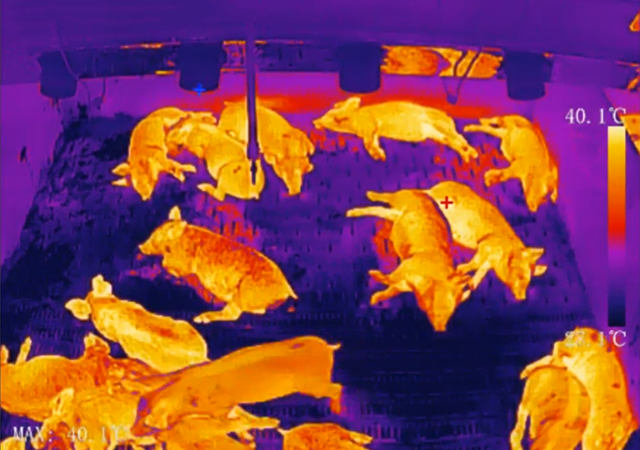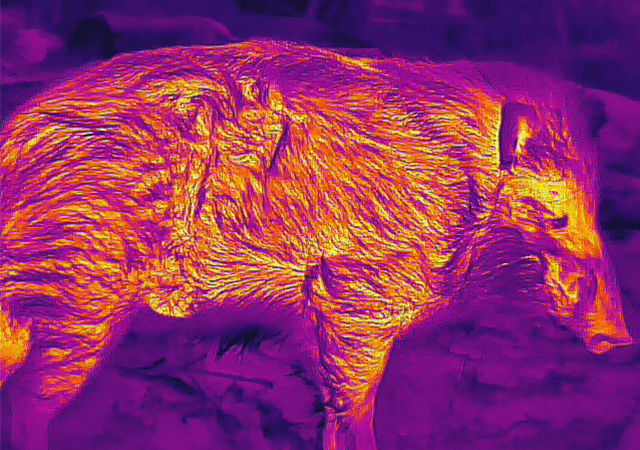In recent years, infrared technology has become increasingly popular in the field of smart breeding. This technology allows farmers to monitor the health and wellbeing of their livestock by detecting infrared radiation emitted by the animals.
Smart breeding practices have revolutionized the agricultural industry, enabling farmers to optimize animal health, reproduction, and overall productivity. One essential technology driving this transformation is infrared technology. By harnessing the power of infrared radiation, farmers can gain valuable insights into the health, behavior, and reproductive patterns of their livestock. This article explores the various applications and benefits of infrared camera core used in smart breeding.

Infrared camera cores belong to a class of sensors called thermal imaging cameras. These cameras can detect and measure the temperature of an object without physically touching it. They work by detecting the infrared radiation that all objects emit based on their temperature.
In the context of smart breeding, farmers use infrared camera cores to monitor the health of their animals. For example, they can detect elevated temperatures, which might indicate an infection or illness. They can also monitor the temperatures of breeding animals to optimize the conditions for successful breeding.
The infrared camera core is a critical component of the thermal imaging cameras used in smart breeding. It consists of an array of tiny sensor elements that can detect and measure infrared radiation. The camera core also includes electronics that process the data from the sensors into an image that the user can interpret.

There are several advantages to using infrared camera cores in smart breeding. Firstly, they allow farmers to monitor the health of their animals without physically touching them, which can help prevent the spread of disease. Secondly, they can detect subtle changes in temperature that might not be visible to the naked eye, allowing farmers to catch potential problems before they become serious.
Non-Invasive Health Monitoring
Infrared technology enables non-invasive health monitoring of livestock. Infrared cameras can detect and analyze thermal patterns emitted by animals, providing crucial information about their well-being. Elevated temperatures may indicate the presence of diseases or infections, allowing early detection, isolation, and treatment, leading to healthier and more productive livestock.
Estrus Detection and Reproduction
Accurate estrus detection is vital for successful breeding. Infrared technology aids in identifying changes in body temperature and behavior patterns associated with estrus cycles. With specialized software, farmers can analyze the recorded data, enabling precise timing for artificial insemination or natural breeding. This optimization of reproduction cycles enhances breeding success rates.
Stress and Behavior Analysis
Infrared technology is valuable in understanding animal stress levels and behavior. By monitoring thermal patterns and changes in body heat, farmers can identify signs of stress, discomfort, or inadequate environmental conditions. This knowledge empowers farmers to make necessary adjustments to housing, nutrition, or management practices, thus improving animal welfare and reducing stress-related health issues.
Environmental Monitoring
Infrared cameras are used to monitor the environment within livestock facilities. By analyzing temperature variations and heat distribution, farmers can identify potential hotspots or cold areas that may affect animal comfort and health. This information assists in optimizing ventilation, heating, and cooling systems, ensuring a favorable environment for livestock.
Disease Prevention and Biosecurity
Infrared technology plays a pivotal role in disease prevention and biosecurity measures. By monitoring body temperatures and detecting abnormal patterns, farmers can promptly identify and isolate potentially sick animals. This proactive approach helps prevent the spread of diseases within the herd and reduces the need for widespread medication, thus promoting sustainable and responsible farming practices.
Feed Efficiency
Monitoring the body temperatures of livestock can provide insights into their metabolic activity and feed efficiency. Infrared technology enables farmers to track variations in thermal patterns, which can be correlated with feed intake and digestion. This knowledge allows for better feed management, ensuring optimal nutrition and minimizing waste, ultimately leading to improved animal growth rates.
Infrared technology has revolutionized smart breeding practices by providing farmers with valuable insights into livestock health, behavior, and reproductive cycles. From non-invasive health monitoring to accurate estrus detection, the applications of infrared technology are vast in the context of smart breeding. Embracing this technology enables farmers to make data-driven decisions, enhance animal welfare, and increase overall agricultural productivity. As infrared technology continues to advance, it holds significant promise for further innovation in the field of smart breeding.
At the same time, there are some challenges associated with using infrared camera cores in smart breeding. For example, the sensors can be affected by external factors such as sunlight or moisture. Additionally, interpreting the data from the thermal imaging cameras requires specialized knowledge and training.
Despite these challenges, infrared camera cores are becoming an increasingly important tool for farmers in smart breeding. As the technology continues to improve, it is likely we will see wider adoption of this technology in the years to come.
Go Top